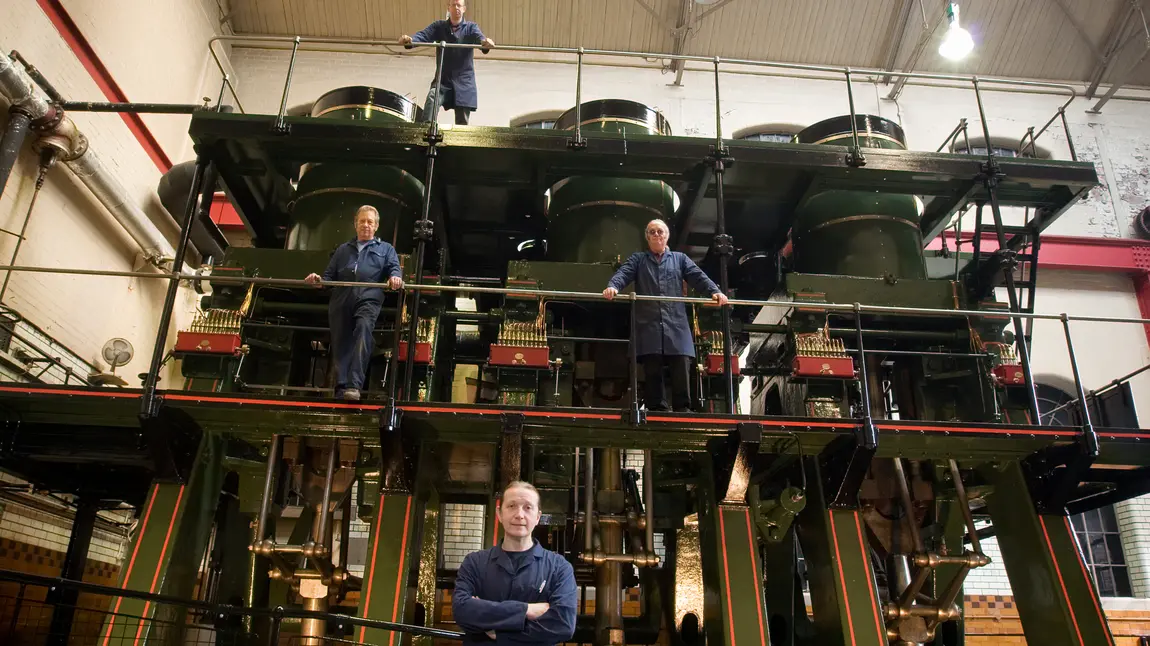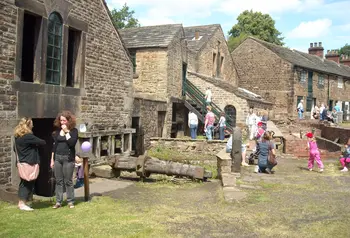How Sheffield unleashed its power

The mighty River Don Engine, thought to be the world’s most powerful steam engine, was built with the specific task of rolling heavy armour plate for the Navy’s Dreadnought battleships that fought at the Battle of Jutland in 1916, the single major engagement between the British and German fleets during the conflict.
Situated at what is now the Kelham Island Museum the Engine is the centrepiece of a project dubbed Sheffield 1916: Steel, Steam and Power, that, thanks to HLF support, will be focusing on the city’s contribution to the War as well as the impact of the fighting on the city and its inhabitants, that included a Zeppelin bombing raid.
The HLF grant of almost £430,000 will meet the cost of transforming the museum with a new Sheffield 1916 visitor experience, a dedicated learning space, and a new boiler to make sure the River Don Engine (or RDE) can continue to thrill the crowds as it cranks into action.
Kelham Island Museum has been able to expand and improve over the years thanks to several HLF grant awards. It also houses another world-beating aspect of Sheffield’s industrial past, namely the Hawley Collection of tool making and cutlery manufacture. The internationally-acclaimed collection features more than 100,000 objects that tell the story of cutlery manufacture and silversmithing and the tools that were used in the processes. Many of the skills employed have since died out while others are only practiced by a handful of craftsmen. The collection and its permanent display are an important record of industrial achievement.
The Abbeydale Industrial Hamlet is yet another living example of Sheffield’s industrial pre-eminence. Located in a former 18th-century steel works near Dore, in the south west of the city, the water-powered industrial works, which are now protected as a Scheduled Ancient Monument, received over £800,000 in Heritage Lottery grants four years ago to allow restoration work to go ahead on buildings and machinery and for a learning centre with workshops to give modern-day metalworkers the opportunity to practice their craft as a direct link to an illustrious past.
First iron and then steel working flourished in Sheffield due to the rich mineral deposits in the hills nearby and the fast flowing rivers which provided their power source. A £48,000 HLF grant is supporting a youth project - Roots of Iron: Ancient Oak to Sheffield Steel – that is researching the signs of early coal mining and the Iron Age activity that predated this at Wincobank Hill which dominates the skyline of the Lower Don Valley.
Fiona Spiers, Head of HLF Yorkshire and The Humber, said: “The imprint ‘Made in Sheffield’ is internationally recognized as the hallmark of quality. Thanks to National Lottery players HLF has been able to support such a range of projects that exemplify the enterprise and craftsmanship that has underpinned the city’s unrivalled impact on Britain’s steel industry.”
